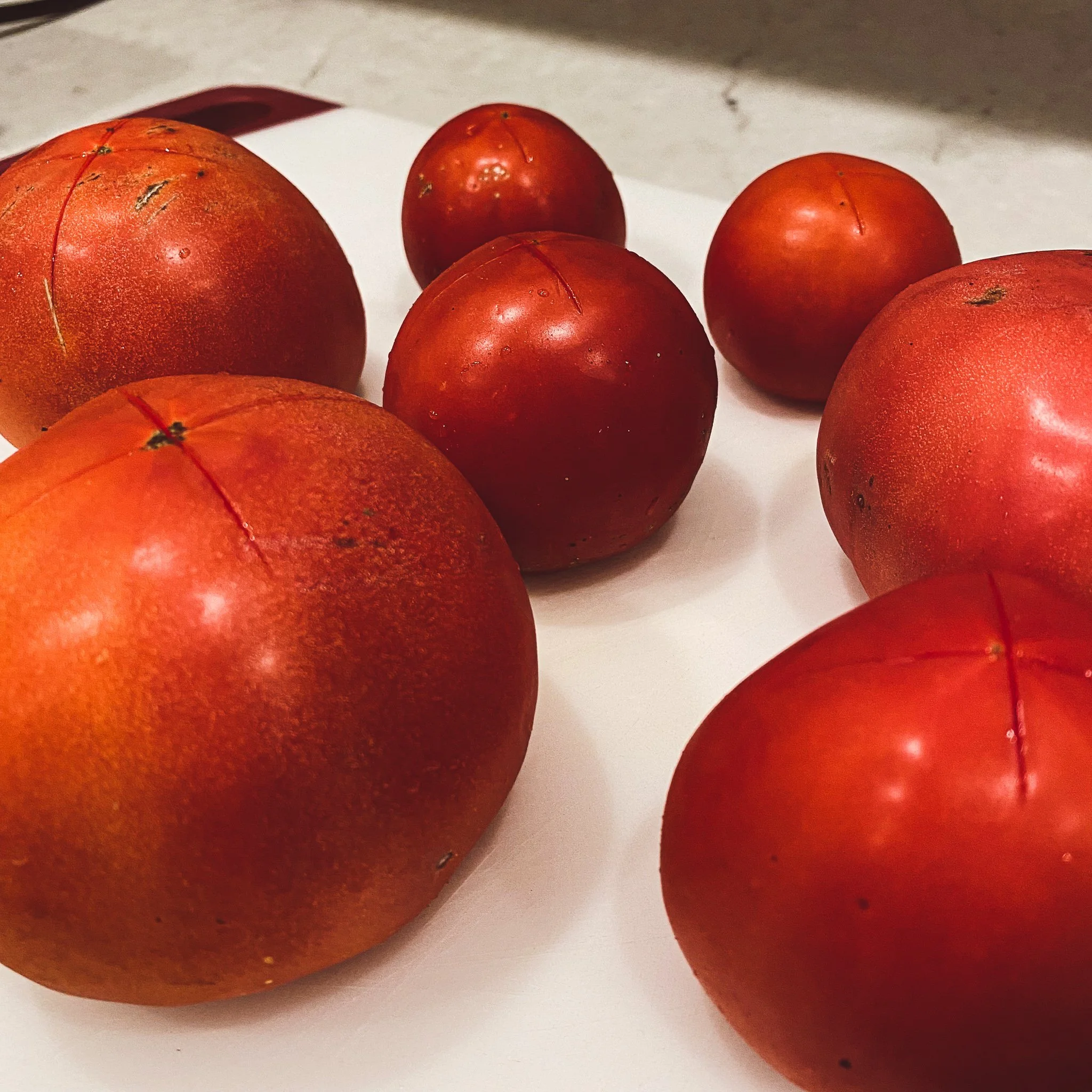March 1, 2022: Spaghetti
My first memory of spaghetti is that I hated it. In fact, I pretty much hated all pasta products. I know it’s normal for children to dislike certain foods, but I hated a large subset of the foods I was given to eat. Cooked carrots, lima beans, any kind of beans… It didn’t help that the decades I grew up—late 60s and the 70s—was the heyday of grossly overcooked foods. I wish I could say that my food aversions were due to having such a fine sensibility that I was above eating anything that was of a lower quality, but I adamantly loved hotdogs and pizza and had no problem with anything purchased at McDonald’s. But spaghetti not so much. I hated it until the one day that I happened to eat the sauce separately from the pasta. I don’t know why that floated my boat, but from then on, I loved spaghetti as long as the pasta and the sauce did not each other at all.
I did evolve as I grew older. In college, I’d cook hamburger, slather on Ragú tomato sauce, and then dump the whole mess on cooked Prince spaghetti. Frankly, I think I’d probably still enjoy a good jar of Ragú sauce, but for some reason I began using more bougie sauces like those in the Classico line. At some point in the aughts, my friend Alison told me how she made sauce, and it was so delicious and easy that I began following her recipe:

Tomato Pasta Sauce
Ingredients
- 2 T unsalted butter
- 1 onion, chopped
- 1 T minced garlic
- 1 6-oz can tomato paste
- 2 28-oz cans peeled tomatoes
- 1 T dried oregano
- 1 tsp freshly ground pepper
- 1 bay leaf
Instructions
- Sauté onion and garlic for a few minutes until onion is translucent.
- Add tomato paste and cook for a few minutes.
- Add peeled tomatoes, oregano, ground pepper, bay leaf. Simmer for two hours, breaking up tomatoes to desired consistency. Remove bay leaf before pouring over pasta.
Not only does it taste good, but your whole house smells like you really know how to cook.
In the past year, I transitioned this recipe from canned tomatoes to fresh ones, which involves peeling a bunch of tomatoes which, as it turns out, is pretty easy. Here’s all you have to do:
Cut X’s in the bottom of each tomato.
Put the tomatoes in boiling water until the skins start to come off (about a minute)
Put the tomatoes in ice water
Peel off the skin
From there, I often put the tomatoes into a blender, but it depends on how I’m going to use them. For the tomato sauce recipe above, I add the tomatoes directly—no blender needed. And I forgo the tomato paste. I just cook the sauce until it reaches the desired consistency.
I’m also making my own pasta now. I sprung for the pasta maker adaptor on my KitchenAid standing mixer, and I have a recipe that works well. [Note: I often cut the recipe for the pasta in half to make 6 oz of pasta using 150g flour, 1/4 tsp. salt, 1 egg, and 1-2 T water.]
But this month, I put a couple of additional elements together. For years, I’ve been making the Chicken Sausage Spaghetti Bolognese recipe from the Hello Fresh subscription meal kit service (I can’t recommend it enough. I stopped using it when I went “next level,” but it never failed to be delicious and easy). It’s a foolproof recipe, but it does include 3 ingredients that I needed to make myself if I was working from scratch (well technically 4 ingredients, but I never add the chicken stock concentrate from the recipe. It doesn’t need it). I needed to make chicken sausage, sour cream, and crushed tomatoes. The crushed tomatoes were easy—it’s just 6-8 peeled tomatoes in a blender as described above. For the chicken sausage, I suspect it’s not “true” chicken sausage, but I followed a chicken sausage recipe from Confessions of a Fit Foodie that I found online. Easy. But sour cream? That’s been a bit of an Achilles heel for me.
The sour cream recipe I’ve been using has just cream, lemon juice, and milk, shaken and then set out to ferment overnight. First time I made it, it tasted like moldy cream. So maybe that old half lemon that’s been sitting open in the bottom of the crisper for several weeks isn’t the way to go. The next time I used a very fresh, whole lemon and that solved the “funky lemon” problem, but the sour cream was pretty runny. Not really a problem for the spaghetti recipe per se because the sour cream is serving more as a flavor enhancer, but what if I want to put it on a taco? Well, it turns out that it all comes down to how I read one of the steps in the recipe. When the recipe called to “shake well,” I gave the sour cream mix 4 or 5 shakes in a sealed jar. After many go rounds with runny sour cream, I finally tried shaking for a full 30 seconds. Bingo! Nice thick sour cream.
**A note about sour cream: Merriam-Webster defines sour cream as “a soured cream product produced by the action of lactobacilli (1).” While I believe some lactic acid bacteria may be available in the air, I’m not sure they are enough in abundance to say I’ve made a true sour cream from just milk (which in my case is pasteurized), lemon, and cream. I will look more into making sour cream in a later post!






